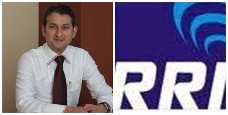
Beyond the Resume: The Modern Art of Talent Attraction and Selection
In the ever-evolving landscape of talent acquisition, the traditional methods of recruiting, which primarily relied on resumes and interviews, have transformed into a dynamic and multifaceted process. The modern art of talent attraction and selection extends far beyond what can be captured on a one-page document. It's a holistic approach that considers the candidate's skills, experiences, personality, and cultural fit within the organization. Here, we delve into the various facets of this modern approach, shedding light on how organizations are redefining their strategies to find and select the best talent.
1. Digital Footprint and Personal Brand:
In today's digital age, a candidate's online presence matters. Recruiters and employers often explore a candidate's social media profiles, personal websites, and online portfolios to gain a more comprehensive understanding of their skills and personality. A positive and consistent digital footprint can enhance a candidate's appeal and showcase their expertise beyond what a resume can convey.
2. Skills and Competency Assessments:
The focus has shifted from merely listing skills on a resume to providing tangible proof of competency. Skill assessments and tests are becoming common in the selection process. These assessments measure a candidate's ability to perform specific tasks, providing objective data that aids in decision-making.
3. Cultural Fit and Values Alignment:
Finding talent that aligns with the organization's culture and values is paramount. Companies recognize that even the most skilled candidate may not thrive if they don't resonate with the company's ethos. Interviews and assessments now often include questions and scenarios that assess cultural fit.
4. Behavioral Interviews:
Behavioral interviews delve into a candidate's past actions and behaviors to predict future performance. Instead of hypothetical questions, candidates are asked to provide specific examples of how they've handled challenges, collaborated with teams, or demonstrated leadership. This approach offers deeper insights into a candidate's competencies.
5. Artificial Intelligence (AI) and Predictive Analytics:
AI-driven tools are revolutionizing talent selection. Machine learning algorithms analyze vast amounts of data to predict a candidate's likelihood of success in a role. These tools help recruiters make more data-driven decisions and reduce biases in the selection process.
6. Video Interviews and Simulations:
Video interviews and simulations enable candidates to showcase their skills in real-world scenarios. These platforms allow candidates to demonstrate their problem-solving abilities, communication skills, and adaptability, giving employers a glimpse into their potential performance.
7. Soft Skills Assessment:
In addition to technical skills, soft skills such as communication, empathy, and adaptability are crucial in today's workplaces. Assessing these skills through role-specific scenarios or personality assessments helps employers gauge a candidate's overall fit.
8. Continuous Feedback and Improvement:
The modern approach to talent attraction and selection is iterative. Employers gather feedback from hiring managers, candidates, and the recruitment team to refine their processes continually. This data-driven approach enhances the efficiency and effectiveness of talent acquisition.
In conclusion, the modern art of talent attraction and selection transcends the confines of a resume. It's a dynamic and multifaceted process that leverages technology, data, and behavioral assessments to identify the best-fit candidates. This evolution is driven by the recognition that a candidate's potential and value extend beyond what can be captured on paper. By embracing these modern strategies, organizations can build stronger, more diverse teams that drive innovation and success in an ever-changing business landscape.




